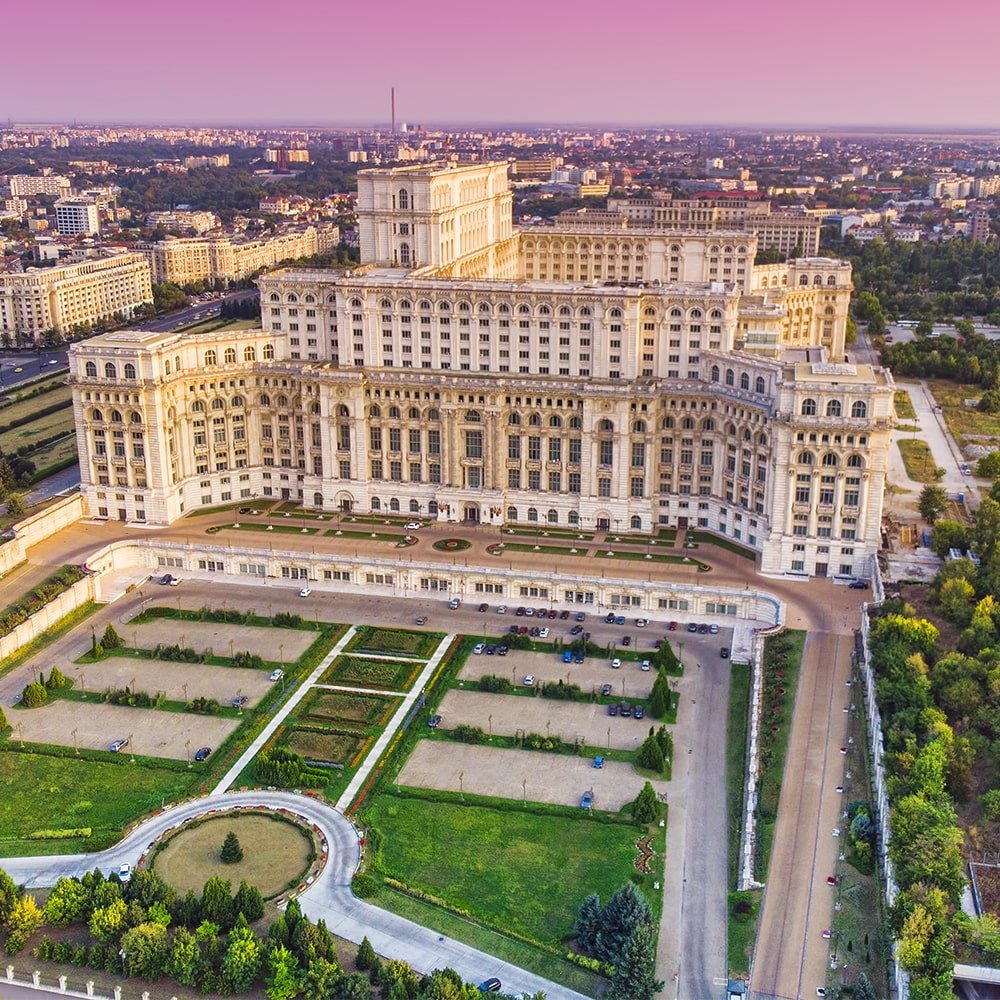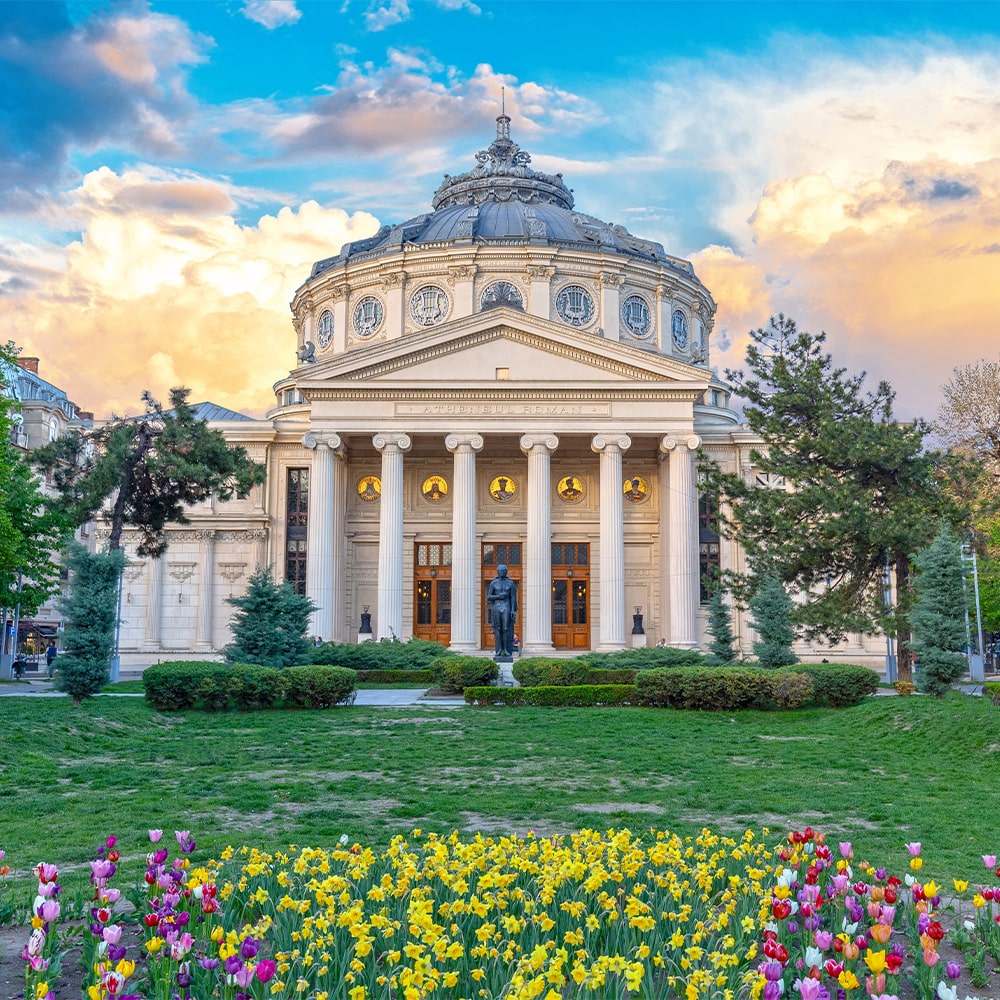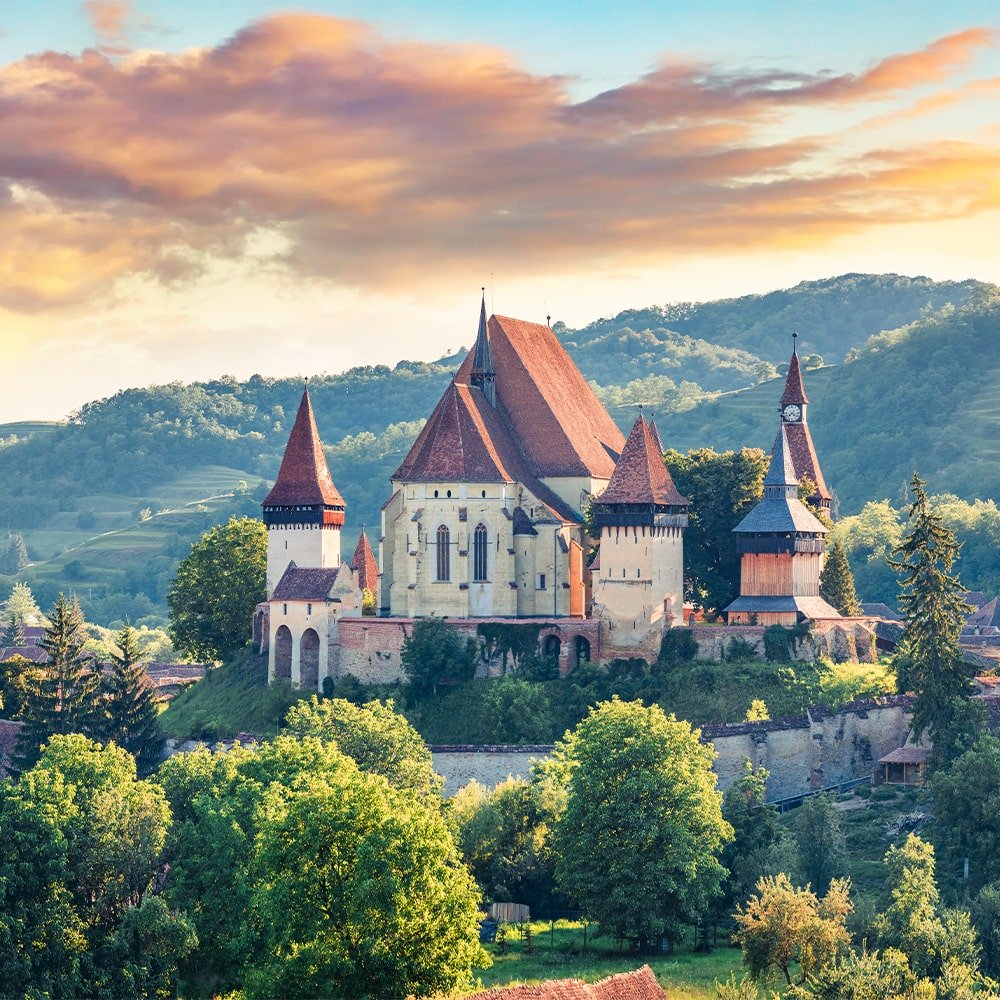Romania






Overview
Fortified churches and monasteries paintings stand regally in a pristine landscape. In the cities, the former Saxon settlements as Sibiu and Brasov transmit charm and lively Bucharest is all energy. The Carpathians draw a large arc through the center of the country, leaving a trail of exposed rocky peaks surrounded by forests of pines and hardwoods, and stretches of bright green grass below. Paths line the peaks, and a network of mountain huts provides a place to rest your head at night. The second longest river in Europe, the Danube, marks the southern border of Romania before turning abruptly to the north and into the Black Sea. The Danube Delta is a vast and only protected wetland area, ideal for hiking, fishing, boating and bird watching. A country is only as good as its people, and you will find Romanians in each region to be open, friendly, proud of their history and eager to share it with visitors. While tourism is growing, Romania is still considered a destination outside joke for foreigners, so you will get compliments from the locals just because of the reveal. While Romanians condemn what they see as the impudence, even rudeness, of their countrymen in Bucharest, there too will discover a lot of friendly faces and drinking buddies improvised if you make the effort. The land that gave us Dracula has no shortage of stunning castles tilted precariously on top of rocky hills. There is the shadow of the Bran Castle, of course, with its connection spurious counting fictional Bram Stoker, but do not overlook the beauty as the 14th century Castle of Hunedoara Corvin or sumptuous pile of King Carol I of the 19th century, the Peles Castle. North of Curtea de Arges, you will find the ruins of a fortress that was really the old land of Vlad Tepes. In Maramures you discover towns and villages that seemingly straight out of the Middle Ages, complete with rack of hay, horse carts and wooden churches stately. Romania’s history is full of tales of heroic principles, fierce warriors who fight the Ottomans. It’s all true, but in the dark reality, that much of Romania, for centuries, was a peasant culture production. The hilly geography and the lack of road required the emergence of hundreds of self-sufficient villages, where the craft of the old school, how to make bread, ceramics, tanning and weaving have been refined to an art. These days much of the country has moved on to more modern methods, but a passion for that so ‘simple’ life persists. Popular museums, especially Moravia and outdoors, are a requirement. In smaller villages, many old folk ways are still practiced. Jonathan Harker in Dracula noted: ‘… every known superstition in the world is gathered into the horseshoe of the Carpathians, as if it were the center of some sort of imaginative whirlpool. ‘Few people tell their folk tales of the old world as do Romanians, with a panoply of colorful witches, giants, ghosts, heroes, fairies and Nosferatu to keep them awake at night. Since most of Romania’s rural and city far apart, it is not surprising that some of these superstitions and stories still survive today. As many as 20% of people in Maramures still believe in witchcraft. Some traditions are harmless, like a tree stuck with pots and pans in the front garden, warn that there is a daughter in the house, which is free to marry. However, in some remote areas there are beliefs more disturbing. Garlic and crosses are still exercised, and bodies are exhumed and a stake driven through their hearts to stop disturbing, as in the case of the village of Marotinul -de- Sus (west of Bucharest) in 2004. During the ‘total eclipse in’ 99, while the urban people was celebrating, the other in Romania were to light a bonfire and play bells across the country to ward off vampires, werewolves and evil spirits (which are associated with the lunar phenomenon).
Highlights
The Palace of Parliament is the world’s second-largest building (after the Pentagon) and former dictator Nicolae Ceauşescu’s most infamous creation. Built in 1984 (and still unfinished), the building has more than 3000 rooms and covers 330,000 sqmetres. Dracula’s Castle in Transylvania: The 14th century castle, owned by several different people over the years, is most famous for its ties to Bram.
Fast Facts
Good to Know
Events
June: The Traditional Crafts Fair — Crafts enthusiasts from all over Romania gather at the Village Museum in Bucharest to offer free demonstrations of traditional woodcarving, rug weaving, textile weaving etc.
August: Dance at Prislop (Hora de la Prislop) — Traditional celebration of ties among three of Romania’s main regions: Transylvania, Moldova and Maramures.

